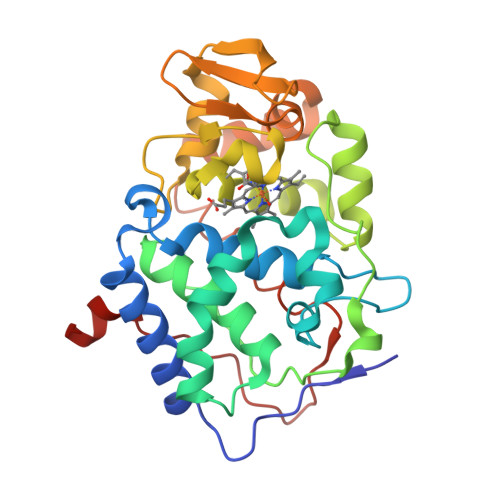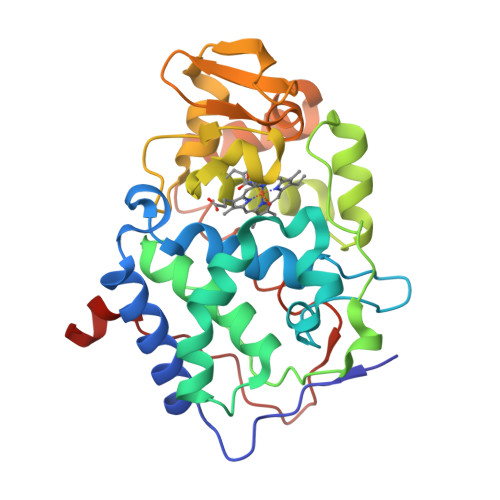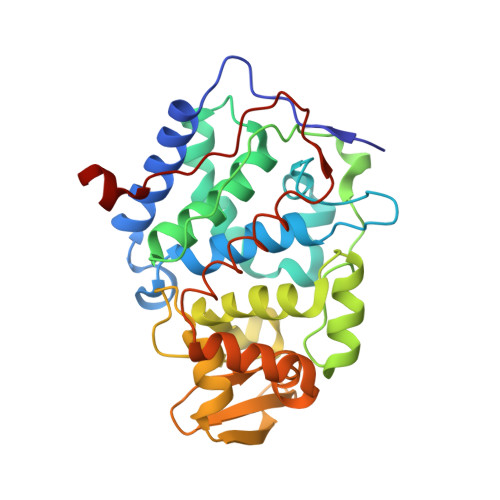Engineering ascorbate peroxidase activity into cytochrome c peroxidase.
Meharenna, Y.T., Oertel, P., Bhaskar, B., Poulos, T.L.(2008) Biochemistry 47: 10324-10332
- PubMed: 18771292
- DOI: https://doi.org/10.1021/bi8007565
- Primary Citation of Related Structures:
3E2N, 3E2O - PubMed Abstract:
Cytochrome c peroxidase (CCP) and ascorbate peroxidase (APX) have very similar structures, and yet neither CCP nor APX exhibits each other's activities with respect to reducing substrates. APX has a unique substrate binding site near the heme propionates where ascorbate H-bonds with a surface Arg and one heme propionate (Sharp et al. (2003) Nat. Struct. Biol. 10, 303-307). The corresponding region in CCP has a much longer surface loop, and the critical Arg residue that is required for ascorbate binding in APX is Asn in CCP. In order to convert CCP into an APX, the ascorbate-binding loop and critical arginine were engineered into CCP to give the CCP2APX mutant. The mutant crystal structure shows that the engineered site is nearly identical to that found in APX. While wild-type CCP shows no APX activity, CCP2APX catalyzes the peroxidation of ascorbate at a rate of approximately 12 min (-1), indicating that the engineered ascorbate-binding loop can bind ascorbate.
Organizational Affiliation:
Department of Molecular Biology and Biochemistry, University of California, Irvine, California 92697-3900, USA.

















